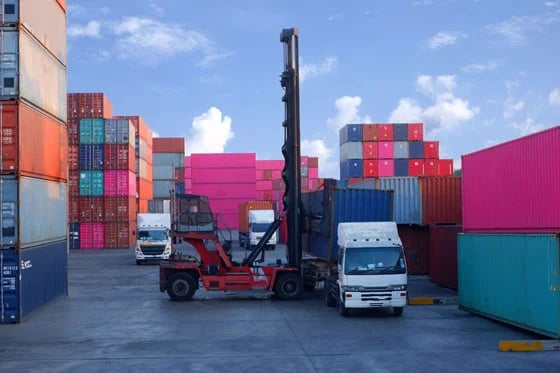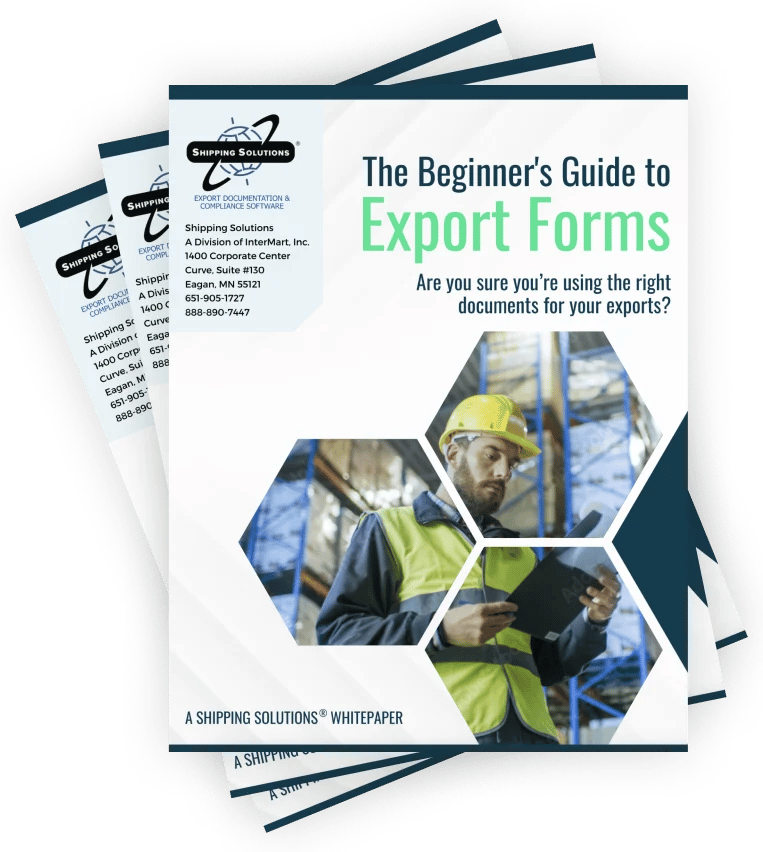The International Trade Blog Export Forms
What Is a Bill of Lading: 3 Things You Need to Know
On: July 24, 2024 | By:  David Noah |
5 min. read
David Noah |
5 min. read
 Are you a new exporter looking for a primer on bills of lading? Or maybe you’re at the opposite end of the spectrum—a seasoned professional seeking a reference or training tool.
Are you a new exporter looking for a primer on bills of lading? Or maybe you’re at the opposite end of the spectrum—a seasoned professional seeking a reference or training tool.
Either way, this article is for you! At Shipping Solutions, we’ve been helping exporters simplify their export documentation, including bills of lading, for more than two decades. We’ll explain, in simple terms, three things you need to know about the bill of lading form. (And when you're finished, if there are other common export documents you want primers on, we have you covered here.)
1. What Is the Definition of a Bill of Lading?
A bill of lading is evidence of a contract between you, the owner of the goods, and the carrier stating what goods you’re shipping, where the shipment is coming from and where it’s headed. It also serves as a receipt issued by the carrier once your shipment is picked up.
A bill of lading (or a freight bill of lading or a waybill) can also serve as a document of title, which allows the person holding it to claim possession of your shipment. There are several specific bills of lading, which we’ll discuss in detail below.
The bill of lading is not typically consigned to the foreign buyer of the goods. It is more typically consigned to the freight forwarder, the warehouse, the packaging company, another third party in the process or the international carrier. If it is not immediately consigned to the international carrier, the forwarder or other third party will need to consign it to the carrier once they are identified.
It may be prepared by the inland carrier or the shipper and then signed when the carrier takes possession or picks up the cargo. The party responsible for completing the bill of lading depends on which Incoterms 2020 Rule is used for the terms of the sale.
2. When and Where Do I Use a Specific Bill of Lading Form?
Specific bills of lading forms should be used based on which method you’re using to transport goods. Here are a few common examples:
Straight Bill of Lading
This bill of lading is typically used to ship goods to a customer who has already paid for them.
To Order Bill of Lading
To order bills of lading are typically negotiable documents and allow the transfer of ownership of the goods outlined in the bill of lading to another party upon endorsement by the party listed as the ultimate consignee on the document. Often under the terms of a letter of credit, the bill of lading is consigned "to order" or "to order of [named] bank."
.webp?width=350&height=453&name=Inland%20Bill%20of%20Lading%20Download%20Now%20(1).webp) Inland Bill of Lading
Inland Bill of Lading
Inland bills of lading are often the first transportation document issued for an international shipment. They are used for cargo shipments by rail or road, but not sea. Download a free inland bill of lading form.
Ocean Bill of Lading
This bill of lading is used for shipping goods overseas. It authorizes the holder or another party to take possession of the goods. Ocean bills of lading can be straight bills of lading or consigned "to order" bills of lading. Download a free ocean bill of lading form.
Air Waybill
The air waybill (AWB) is the equivalent of an ocean bill of lading for air transport. However, unlike the ocean bill of lading, it cannot be negotiable; in other words, it may not be consigned "to order." Download a free air waybill form.
Multimodal Bill of Lading
You’ll use this type when you combine shipping methods. For example, goods flown from Omaha, Nebraska, to New York City and then shipped to Europe qualify for a multimodal bill of lading.
3. Why Do I Need a Bill of Lading?
There are four significant reasons to use a bill of lading form:
It’s a receipt for your goods and guarantees you are properly insured.
You need to have a record of what’s included in the shipment, which is what a bill of lading provides. The bill of lading describes the items being shipped, where the shipment is going, who’s paying, and how it’s going to get there.
The person who’s picking up the goods signs the bottom of the bill of lading. The signature verifies that what you’re saying is there is actually there. For insurance purposes, it is proof of what’s on board and informs your insurance coverage should your items be damaged in transit.
It’s evidence of a contract for carriage between the exporter and the carrier.
The bill of lading explains all the details about how the goods are going to be shipped so there’s no doubt about who’s in charge of each step.
It ensures your shipments aren’t delayed.
A correctly completed bill of lading eliminates any shipment questions or issues. Any mistakes on your bill could delay your shipment or, worse yet, delay you getting paid for your shipment.
It ensures you get paid for your goods.
More than 10,000 shipping containers are lost annually. Without a correctly completed bill of lading, it is very difficult to get compensated for your loss.
In Conclusion
As with most all export documentation, the thing to remember about the bill of lading is that it needs to be completed correctly. It’s important that all your export documentation is consistent.
Depending on what you are exporting, how you’re shipping it, and what documents your shipment requires, you will probably need to complete documents in a different order. That means a lot of paperwork, a lot of redundancy, and a lot of room for error.
That’s why we’ve created a better way. Shipping Solutions export documentation software allows you to complete your export documents up to five-times faster than the traditional manual process. Instead of copying the same information over and over again, you enter information in only one place, which makes you less likely to make expensive mistakes.
Let us show you how Shipping Solutions works. Register for a free online demo of the software.
Like what you read? Subscribe today to the International Trade Blog to get the latest news and tips for exporters and importers delivered to your inbox.
This article was originally published in May 2014. It has been updated to include current information, links and formatting.

About the Author: David Noah
As president of Shipping Solutions, I've helped thousands of exporters more efficiently create accurate export documents and stay compliant with import-export regulations. Our Shipping Solutions software eliminates redundant data entry, which allows you to create your export paperwork up to five-times faster than using templates and reduces the chances of making the types of errors that could slow down your shipments and make it more difficult to get paid. I frequently write and speak on export documentation, regulations and compliance issues.


